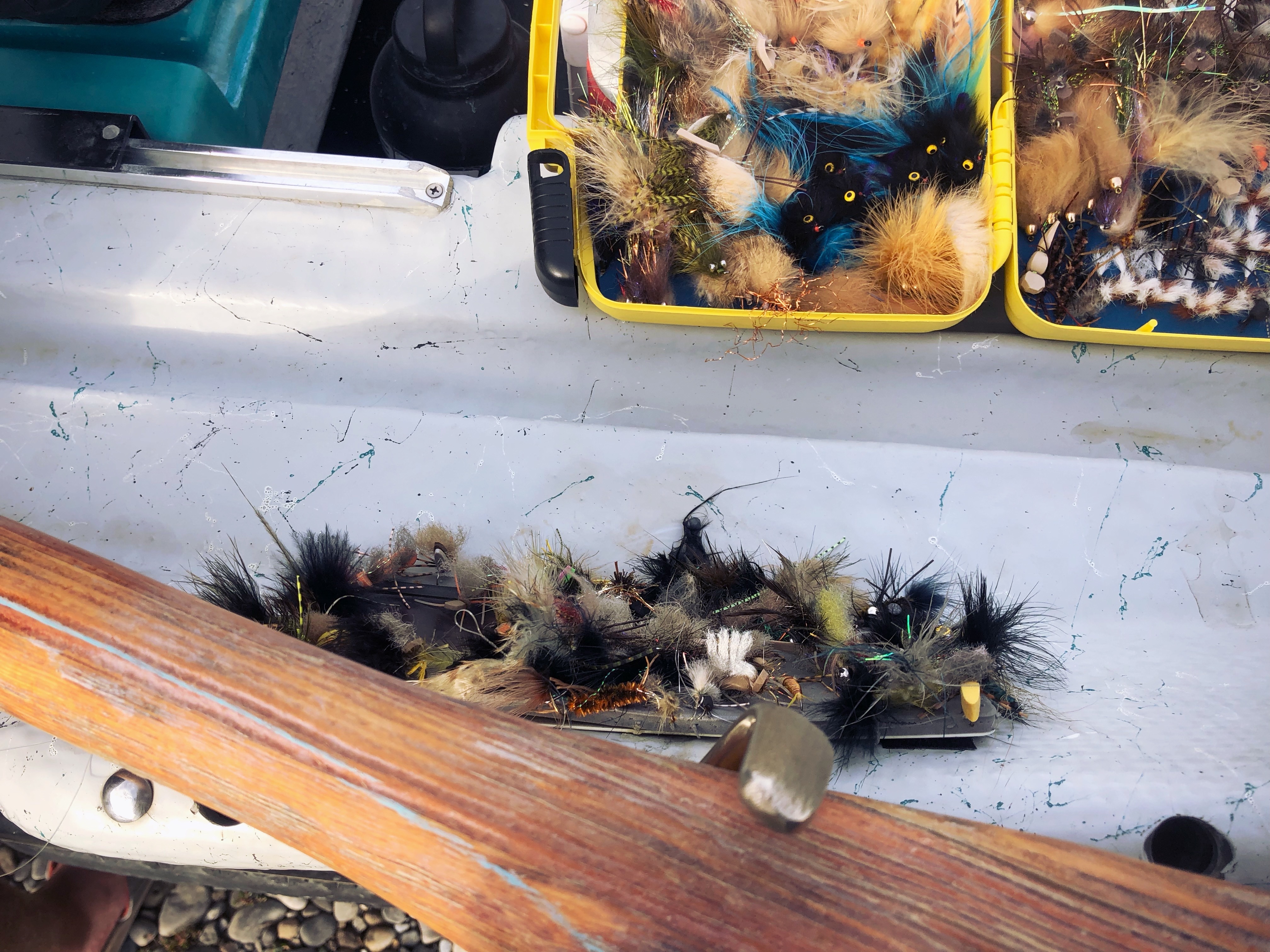Fish Handling 101: Keeping Them Healthy, Especially When It’s Hot

Fish Handling 101: Keeping Them Healthy, Especially When It’s Hot
We’ve had a few questions about the dos and don’ts of fish handling, so here’s a quick list of fish fighting, handling and releasing tips to keep your summer fish happy and healthy.
Keep fish wet: Seems simple enough, because they live in the water, but as an angler, it’s your job to keep them in the water where they can breathe comfortably, not gasping for air in the bottom of a boat, or on the rocks. Step one is to have a landing net (with a rubber bag, not mesh), so your flies can be removed quickly and easily and in a controlled environment, after a fish is netted. Step two is to revive them after a stressful fight and release them to swim another day. If a fish is struggling to get going, take some extra time to revive them, holding them by the tail, in the water, until their strength returns. Never release a fish that’s turning its belly up in the water; they will certainly perish. They need more time.
Wet your hands: Fish are covered with a layer of protective mucous (their slime coat), which acts as a barrier against bacteria, fungi and parasites. If you have to touch or handle a fish, always remember to wet your hands beforehand. Dry hands, or any dry surface (rocks, grass banks, even dry net bags), can remove this important fish protection and make them more vulnerable to disease and infections. All it takes is a second or two to get things wet.
Grip and grins: Everyone wants a hero shot to post on social media–we get it. Then again, we’re starting to not get it after a long summer of Instagram hero shots, which means a lot of fish are spending a lot of time out of the water. As more anglers enter the sport, it’s our job to handle fish with more than the customary amount of care, as well as educating the newcomers. Get a picture of the fish in the water. Get a picture of the fish swimming away. Hell, take more photos of your friends, scenery or the destinations–it’s more interesting anyway. No one needs any more grip and grins, and they probably should be removed from the fly-fishing lexicon, sooner rather than later. Like any great athlete who just scored, act like you’ve been there before…
Water temps: We’re not scientists, but it isn’t hard to figure out that fish have ideal water temperatures to feed and be active in. Most anglers will have noticed lethargic, inactive fish during freezing spring temps, happy and active fish during cool early summer temps and sluggish, inactive fish (again) during hot summer temps. Keep Fish Wet does a great job of putting some exact science to this exercise with their science-based angling thresholds. They recommend some important water temps for the summer angler to be aware of (the point at which angling can start harm salmonids): 54℉ bull trout, 61℉ steelhead, rainbow, cutthroat, brook trout, 66℉ brown trout. “In most cases, dissolved oxygen decreases as water temperatures increase, meaning that it can take fish longer to recover from being angled.” – KFW
Proper equipment: Handling fish properly often means having the correct equipment. Utilize rods, reels and tippet sizes that are appropriate for the fish you are targeting. Undersized equipment that forces anglers to extend fighting times can lead to unnecessary fish stress and mortality. Fish at the upper end of the equipment and tippet size thresholds you can get away with, not the lower. Other on-water gear and accessories you should carry to help with in the capture and release of happy fish: a good (large) net with a rubber bag (long-handled for oarsmen), pliers for saltwater (for removing hooks), hemostats (for freshwater), The Ketchum Release tool, a thermometer to check water temps, one of the new geo-tracking/water-mapping apps (onWater, TroutRoutes) to plan your trips around actual flow and water temp data.
Boating tips (from Tim Romano): Keep fish low to the water. As soon as you lift a fish out of the water, start holding your breath–when you need to breathe, time to let them go. Watch for your fingers in their gills. Obviously, wet your hands. Try to de-hook your fish over the water, not in the boat. Give them CPR before they take off. Make sure they don’t float. Consider using SwimWell fish spray if they are seriously struggling. If the fish is deeply hooked, cut the line.
We’re always looking for Flylab feedback–send any comments, thoughts, suggestions, and we’d love to hear from you.
.svg)








